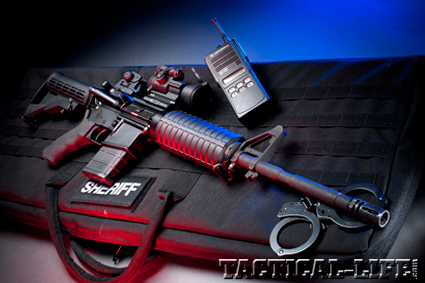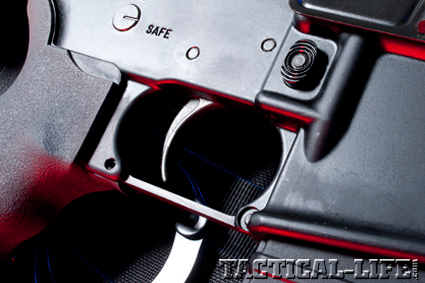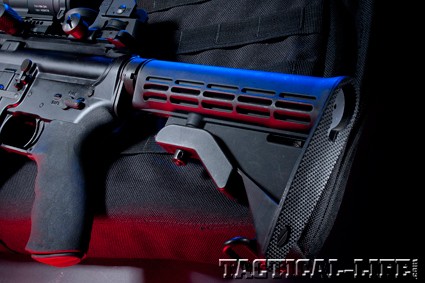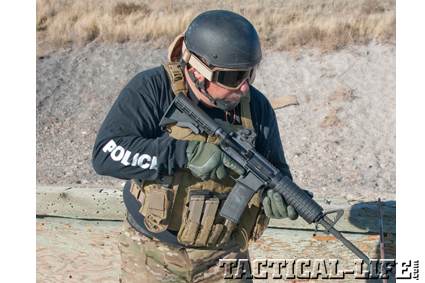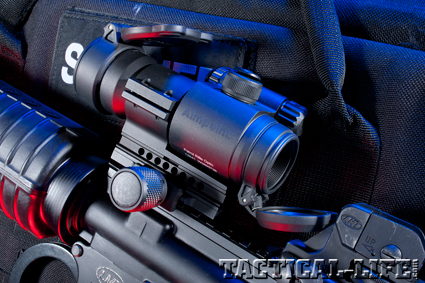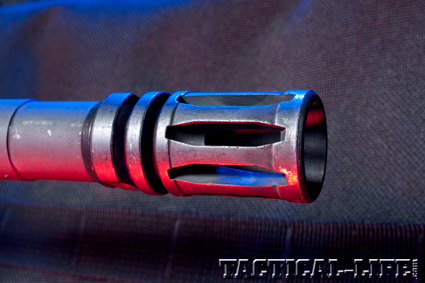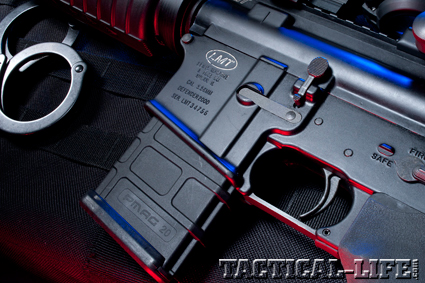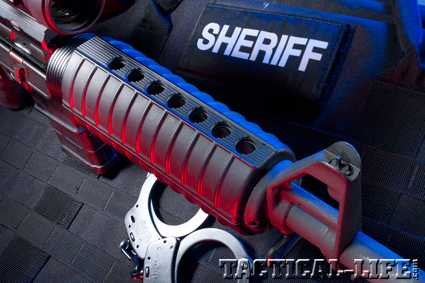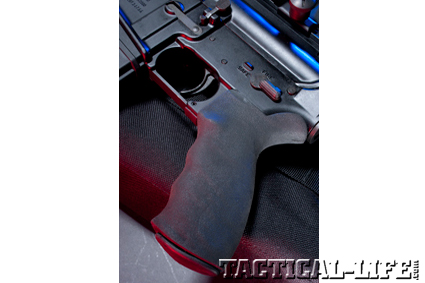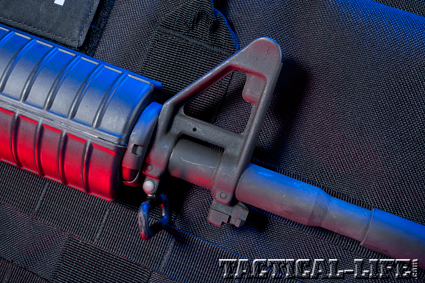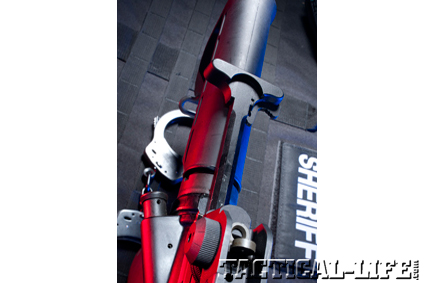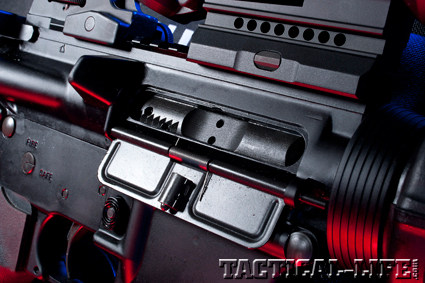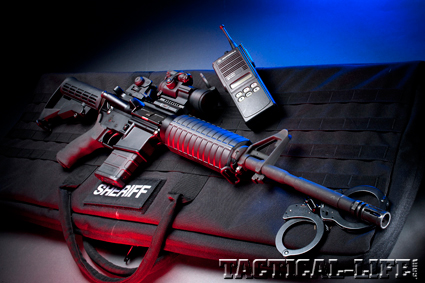With all the attention these days being given to patrol rifles with bells and whistles galore, we often forget that most police officers simply need a tough and reliable basic carbine for their dangerous jobs. Also, especially in this economy, few working officers have a couple grand to spend on a rifle—nor do many police departments, for that matter.
Though I am now retired, I still attend every firearms training with my police department. It not only keeps my retired police concealed carry ID intact, but it also gives me a chance to keep in touch with the officers and investigators working the streets. Although there is a standard go-to rifle that is used for qualifications, it is not uncommon for me to test a new weapon system. The setting provides for some realistic results, and it’s also interesting for those officers who want to see and shoot these weapons.
Every time this occurs, it becomes clear that most officers are looking for a simple direct-impingement rifle built to the highest standards. On occasion, an officer has saved up some money and wants a rifle to call his or her own. It needs to be in their price range, and it needs to pass a certification course in order to meet policy. A mil-spec rifle is helpful because many cops served as soldiers at some point. Most models with this kind of quality seem to cost around and a bit over $1,000. There are certainly a ton of choices out there, many under that price point, but true mil-spec quality is seemingly becoming more rare.
Advertisement — Continue Reading Below
So what does this elusive “mil-spec” tag mean? Unfortunately, it is more often marketing than anything else. But, there is a specification, and a few companies still adhere to it, mostly companies that actually sell to the military. There are several details, but three things stand out as the most important. The first is testing of all the critical operating parts for durability. This includes hammers, triggers, sear parts, bolt carriers and bolts. Meeting that qualification ensures these parts will not fail or break under the harsh conditions they might encounter. This requires magnetic-particle testing and proofing, which many companies simply do not complete or are unwilling to pay for.
Another critical aspect is interchangeability. If a bolt, safety, trigger or other component needs to be changed in the field, there may be no place to “fit” it. The part needs to pretty much drop in and work. This allows for field repairs without fitting tools or making it dangerous for the operator. In theory, you should be able to swap parts at will and have everything working to battle-condition standards.
Lastly, barrels and chambers are supposed to be chrome-lined, proof-tested and accept any 5.56mm NATO round. They also need to work with any military-specified magazine. That may not be the latest innovation—just a simple aluminum magazine that exists in the millions within the military inventory or in many NATO countries. This is critical to the military and is becoming so for many police departments. At a recent qualification, this problem arose with the use of a department magazine in a particular gun. It seems that it would not run on the department magazines—only the ones supplied. Given the premise that you may need to use your partner’s magazines in a gunfight, this may be critical. Magazine compatibility is just another reason that many departments stick with a mil-spec manufacturer for their needs.
Advertisement — Continue Reading Below
Lewis Machine & Tool (LMT) was started in 1980 in Milan, Illinois. The company began with the idea of building rifles and parts for the military that are of the highest quality. The company’s weapons and parts have found their way into the hands of many of our elite warriors and officers. In fact, LMT’s unwillingness to compromise has at times put it at odds with the trend towards lowering quality to meet price points. On the other hand, this has left the company struggling to meet the demand for its systems. LMT weapons are sometimes harder to get and cost a few dollars more, but they are always in high demand. LMT’s AR-platform rifles are easily some of the most desirable on the market in my opinion. Although LMT’s innovative barrel-change system (MRP) has been popular, the company makes great rifles for any LEO, such as the Defender Standard Patrol Model (SPM) 16.
Designed specifically as a patrol rifle at a pretty fair price, the Defender SPM 16 brings the LMT build quality to a basic AR platform. The upper receiver is a standard M4 flattop design using a chrome-lined, 16-inch barrel that has been properly proofed and inspected. The 1-in-7-inch-twist-rate barrel has also been cryogenically treated for accuracy and ease of maintenance. Chambered in 5.56mm NATO, the SPM 16’s barrel has a standard M4 contour and is capped with an A2-style flash suppressor.
The rifle’s mil-spec bolt and semi-auto carrier group are strong and reliable. The lower receiver is a Defender 2000 fitted with an LMT Gen 2 mil-spec collapsible buttstock. The trigger is a mil-spec, single-stage unit. The entire SPM 16 package ships with a sling, one 30-round magazine and a rail-mounted tactical rear sight that is adjustable for windage and includes the standard A2-style BDC dial.
Advertisement — Continue Reading Below
For testing purposes, I only added a couple things. I attached an LMT Rebar Entry Attachment (REA) to the muzzle and used it throughout the live-fire testing. Although the supplied back-up iron sights were used for most of the shooting, I also mounted a Weaver 1-5x24mm Tactical scope for group shooting as well as an Aimpoint Micro H-1 for a few rounds. Other than that, I mostly tested the SPM 16 as you would receive it. I also tested the rifle with several magazines, including those from Colt, Brownells and Magpul.
Range Time
Having owned and tested a few LMT rifles, there were no surprises here. What was interesting was that the tightest shot cluster was fired with good old Winchester White Box 55-grain FMJ rounds. I’ve noticed that ammunition loaded closer to match specification produces tighter groups. Not so with this gun, however—it just seemed to really like the Winchester 55-grain FMJs. It produced a five-shot group measuring right at about an inch, with some vertical stringing attributed to the shooter. Most everything else grouped between 1 and 1.5 inches. During all the close-up work, the SPM 16 just sent round after round of 55-grain FMJ in to an ever-larger hole. This rifle is easily as accurate as you can get a true combat rifle to be.
To test this as a patrol rifle, I deployed it from a car a few times and spent a good chunk of time fighting around a cruiser. The SPM 16 is fast and easy to carry. Even with the cool rebar attachment, the rifle was just as accurate. Since we are talking about it, I also used the rifle with the REA attachment to whack a 20-inch piece of rebar down to size. Especially with the M855 (green tip) ammunition, it was able to cut 0.5-inch-thick rebar in two with a single shot. The REA attachment is a pretty handy little tool, one that I would definitely keep mounted to the muzzle for a long time. When not being used to destroy a wall, it doubles as a standoff/CQB tool. The LMT literature states it can act as an “enhancement tool when dealing with non-compliant violent personnel who do not present a lethal threat to the solider or officer.” It is also touted as a great “people mover.” While there are more than a few arguments in the police world as to whether such a device can or should be used in this manner, there is little doubt as to its effectiveness!
Advertisement — Continue Reading Below
I also spent some time with the SPM 16 on the “wall,” a training device at the Global One Range where I test most weapons I receive. Basically, it is a wall with various openings at different heights. You can move up and down some stairs, a ladder, and even climb on the roof. The SPM 16 was easy to move around with, even while I wore rifle plates. Most of the performance evaluation was done with simple body armor, but I did spend a few minutes in full SWAT attire. The SPM 16’s collapsible buttstock allowed me to adjust the length of pull and find a comfortable position, even taking my relatively short arms into account. I found the rifle to be truly versatile, and it should fit into any patrol or police role very well.
The LMT Defender Standard Patrol Model 16 provides agencies and officers a terrific mil-spec AR rifle. It is built to the same standards that serve our military, and at a retail price of $1,371.21, it is priced well. The rifle proved to be 100 percent reliable with everything that was thrown its way and was really excellent to shoot. If you are looking for a patrol rifle you can depend on for many years of hard use, then take a really close look at LMT’s Defender. It may be a standard rifle, but that’s only because it sets the standard as well. For more information, visit lmtdefense.com or call 309-732-9527.
